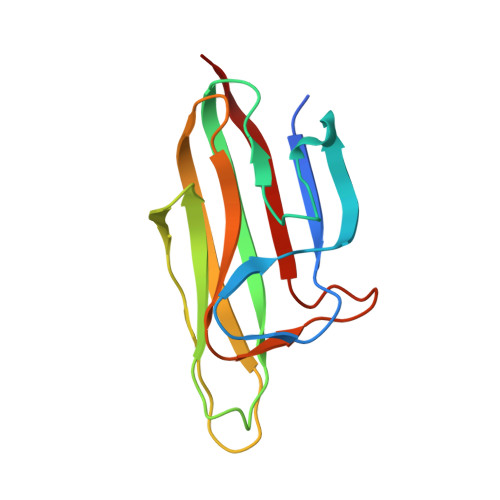Structures of C1q-like Proteins Reveal Unique Features among the C1q/TNF Superfamily.
Ressl, S., Vu, B.K., Vivona, S., Martinelli, D.C., Sudhof, T.C., Brunger, A.T.(2015) Structure 23: 688-699
- PubMed: 25752542
- DOI: https://doi.org/10.1016/j.str.2015.01.019
- Primary Citation of Related Structures:
4QPY, 4QQ2, 4QQH, 4QQL, 4QQO, 4QQP - PubMed Abstract:
C1q-like (C1QL) -1, -2, and -3 proteins are encoded by homologous genes that are highly expressed in brain. C1QLs bind to brain-specific angiogenesis inhibitor 3 (BAI3), an adhesion-type G-protein coupled receptor that may regulate dendritic morphology by organizing actin filaments. To begin to understand the function of C1QLs, we determined high-resolution crystal structures of the globular C1q-domains of C1QL1, C1QL2, and C1QL3. Each structure is a trimer, with each protomer forming a jelly-roll fold consisting of 10 β strands. Moreover, C1QL trimers may assemble into higher-order oligomers similar to adiponectin and contain four Ca(2+)-binding sites along the trimeric symmetry axis, as well as additional surface Ca(2+)-binding sites. Mutation of Ca(2+)-coordinating residues along the trimeric symmetry axis lowered the Ca(2+)-binding affinity and protein stability. Our results reveal unique structural features of C1QLs among C1q/TNF superfamily proteins that may be associated with their specific brain functions.
Organizational Affiliation:
Department of Molecular and Cellular Physiology, Stanford University, Stanford, CA 94305, USA. Electronic address: suressl@indiana.edu.















